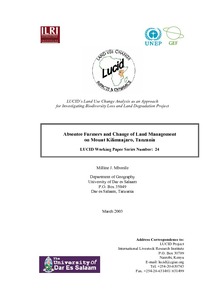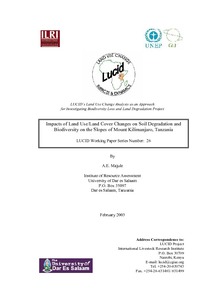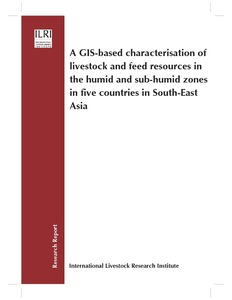Location
Vision, mission and strategy
ILRI's strategy 2013-2022 was approved in December 2012. It emerged from a wide processof consultation and engagement.
ILRI envisions... a world where all people have access to enough food and livelihood options to fulfil their potential.
ILRI’s mission is... to improve food and nutritional security and to reduce poverty in developing countries through research for efficient, safe and sustainable use of livestock—ensuring better lives through livestock.
ILRI’s three strategic objectives are:
- with partners, to develop, test, adapt and promote science-based practices that—being sustainable and scalable—achieve better lives through livestock.
- with partners,to provide compelling scientific evidence in ways that persuade decision-makers—from farms to boardrooms and parliaments—that smarter policies and bigger livestock investments can deliver significant socio-economic, health and environmental dividends to both poor nations and households.
- with partners,to increase capacity among ILRI’s key stakeholders to make better use of livestock science and investments for better lives through livestock.
This is ILRI’s second ten-year strategy. It incorporates a number of changes, many based on learning from the previous strategy (2000–2010, initially produced in 2000 and modified in 2002), an interim strategy (2011–2012) and an assessment of the external and internal environments in which the institute operates.
Members:
Resources
Displaying 861 - 865 of 1152Absentee farmers and change of land management on Mount Kilimanjaro in Tanzania
A study on land use types, soils and linkage between soils and biodiversity along the slopes of Mt. Kilimanjaro, Tanzania
A GIS-based characterisation of livestock and feed resources in the humid and sub-humid zones in five countries in South East Asia
Policies for sustainable land management in the highlands of Tigray, Northern Ethiopia
Participants in this workshop reviewed and discussed findings from the research project‚ Policies for Sustainable Land Management in the Highlands of Tigray, Northern Ethiopia, begun in January 1998, and from other related research being conducted in the highlands of Tigray by Mekelle University and its collaborators.
Spatial analysis of soil fertility management using integrated household and GIS data from smallholder Kenyan farms
Although soil fertility is recognized as a primary constraint to agricultural production in developing countries, use of fertilizer in Sub-Saharan Africa is declining. Smallholder farmers still rely heavily on livestock manure for soil fertility management. To explore the determinants of soil fertility management practices, including both the use of cattle manure and inorganic fertilizer, data are used from a sample of 3,330 geo-referenced farm households across Central and Western Kenya. A bivariate probit model is applied to jointly examine the use of the two technologies.






